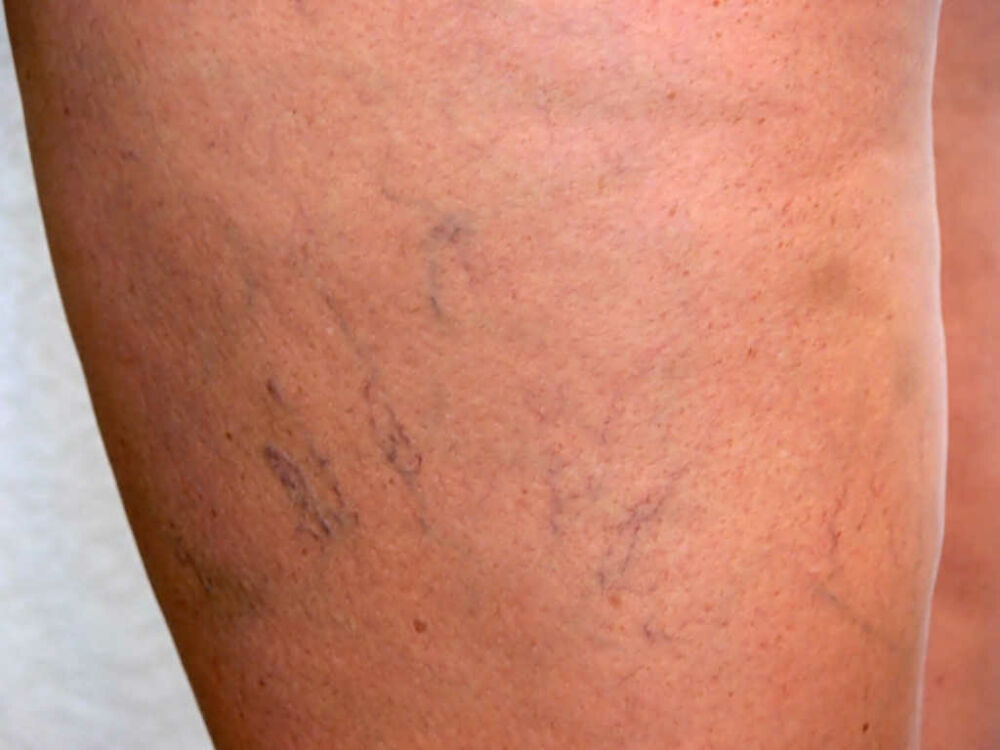
Are Those Varicose Veins or Spider Veins?
Though caused by the same venous disorder, varicose veins and spider veins have some distinct differences.

Menopause and spider veins seem to go hand-in-hand. This article will detail why this tends to happen to some people.
Menopause changes a woman’s body, and one of the most visible changes may be the sudden appearance of spider veins. Spider veins, or telangiectasia, are clusters of thin red, purple, or blue lines on the calves, ankles, and sometimes the face.
Varicose veins can expand to more than three millimeters in diameter. On the other hand, spider veins are typically less than one millimeter in diameter. Spider veins tend to appear more commonly in women, like varicose veins, especially during menopause. They also generally produce fewer symptoms than varicose veins but can cause itching, burning, and bleeding. Fortunately, they're not a cause for concern and are easily treatable.
During menopause, women produce less of the hormones estrogen and progesterone. The reduction in hormone levels causes vein walls to thicken and constrict blood flow. When blood pools, the vein swells and emerges as a visible spider vein.
Weight also plays into the occurrence of spider veins. When progesterone and estrogen levels dip, weight tends to go up. Extra pounds add pressure on those already strained veins.
Another risk factor of spider veins is advancing age. As we get older, veins weaken and cannot circulate blood as efficiently as we once did. Because menopause occurs at an advanced age, a woman’s veins are doubly impacted by hormonal changes and the natural aging process.
Spider veins don't indicate a serious underlying medical condition, are usually asymptomatic, and are considered a cosmetic issue for most women. However, for those who don like the appearance of clusters of veins on their legs, there are preventative actions for spider veins, such as:
Exercise. Spider veins develop because of sluggish blood flow, but you can boost circulation with exercise. Specifically, low-impact workouts that tone the calf muscles, such as walking, biking, and swimming, can help push blood back to the heart.
Wear Compression Stockings. Made of strong elastic fabric, compression stockings gently squeeze the veins to promote blood flow upward to the heart.
Avoid Sitting or Standing for Prolonged Periods. When you sit or stand for prolonged periods of time, blood tends to build up in the leg veins. Whenever possible, take a walk or flex your ankles to get the blood moving again.
Manage Your Weight. Extra pounds add more stress on your veins. Eating a healthy, low sodium diet and exercising will help lighten the pressure off your veins.
Raise Your Legs. Reverse the downward pressure on your veins by elevating your legs for as little as 15 minutes a day. When you raise your legs, you prevent blood from pooling in the veins.
Prevention can keep spider veins from forming. However, if you already have spider veins and want to eliminate them, CVR offers several safe and effective treatment options:
Sclerotherapy. The vein doctor will inject a safe, saline-based solution into the veins during this procedure. This solution irritates the vein wall and forces it to close and disappear.
Laser Treatments. During these minimally invasive treatments, the heat from a laser destroys the affected vein.
Eliminating spider veins may require multiple treatment sessions. A vein specialist can discuss each method with you to help you select the best one for your needs and preferences.
Center for Restoration specializes in the treatment of varicose and spider veins. Our physicians offer recommendations for lifestyle changes as well as surgical options to keep your veins healthy. Contact us today to learn more!